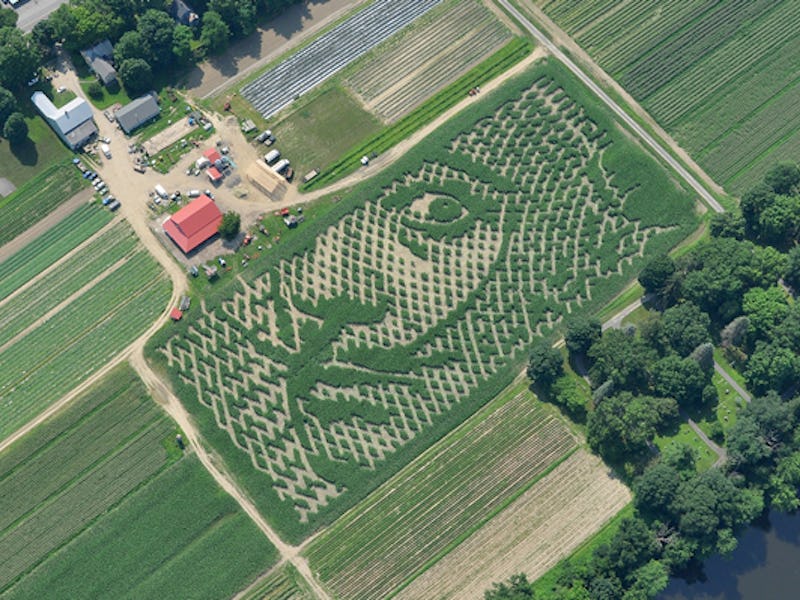Nothing says “fall” like our sudden willingness to subject ourselves to deliberate disorientation in fields of corn. Unfortunately for the direction-deficient, as corn maze creators become more technologically savvy — GPS and drones have become as ubiquitous as tractors — the corny labyrinths are only becoming more difficult to solve. That means the old escape-strategy standby — the right-hand-on-the-wall trick — may no longer work.
The “wall follower” rule, as it’s known among maze-solving experts, is simple: If you put your right hand on a corn maze wall and walk, it will, eventually, lead you to the exit (which might very well be the way you came in). Sounds simple, right? But here’s the catch: The rule only works if the maze is simply connected. Scholars of topology use this term to describe a maze that consists of walls that are all connected to the outside wall, like this hedge maze in the St. Louis Botanical Gardens:
The 'wall-follower' rule works on simple mazes like this one, where all the walls are connected to the outer perimeter.
In a maze like this, putting one hand on the wall and moving in one direction will ensure you won’t wind up in the same place twice; tracing the outline of the walls will, inevitably, lead you to an exit (which may very well be way you entered). Simple mazes are like a loop of knotted string simply deformed into labyrinthine paths; if you were to stretch out that string, it would form a circle, and following the wall would eventually lead you back to the knot.
But today’s mazes are not so simply connected. When a corn maze includes islands — that is, walls that are not connected to the outer perimeter — using the wall-follower rule could lead you in circles. Imagine, for example, deciding to put your right hand on the wall of Taylor Swift’s pupil. You’d literally get lost in her eyes!
If you used the wall-follower rule on the hedge creating Taylor Swift's left pupil, you would inevitably end up going in circles.
A similar thing happened in 2011 to a family in Danvers, Massachusetts that got so lost in a corn maze that local police had to be called in. Maze experts interviewed by the New York Times explained that the presence of bridges and crossovers — complications present in today’s elaborate mazes — rendered the wall-follower technique “unhelpful.”
What, then, are intrepid corn maze enthusiasts supposed to do in the case of irreparable lostness? Don’t panic, for one, and keep your fingers crossed that a drone will come find you. After all, maze makers don’t have to be the only ones benefiting from technology’s advance.
